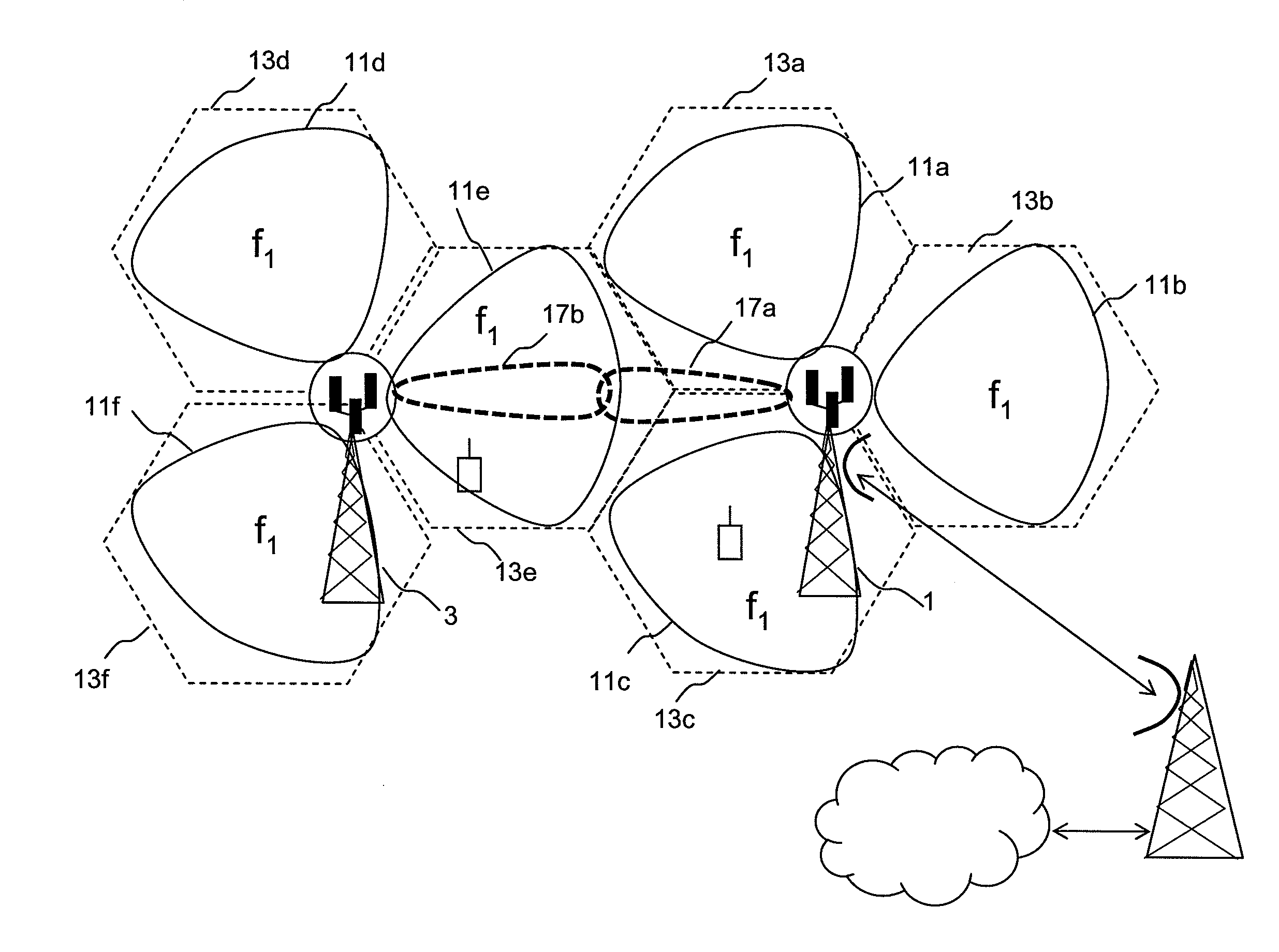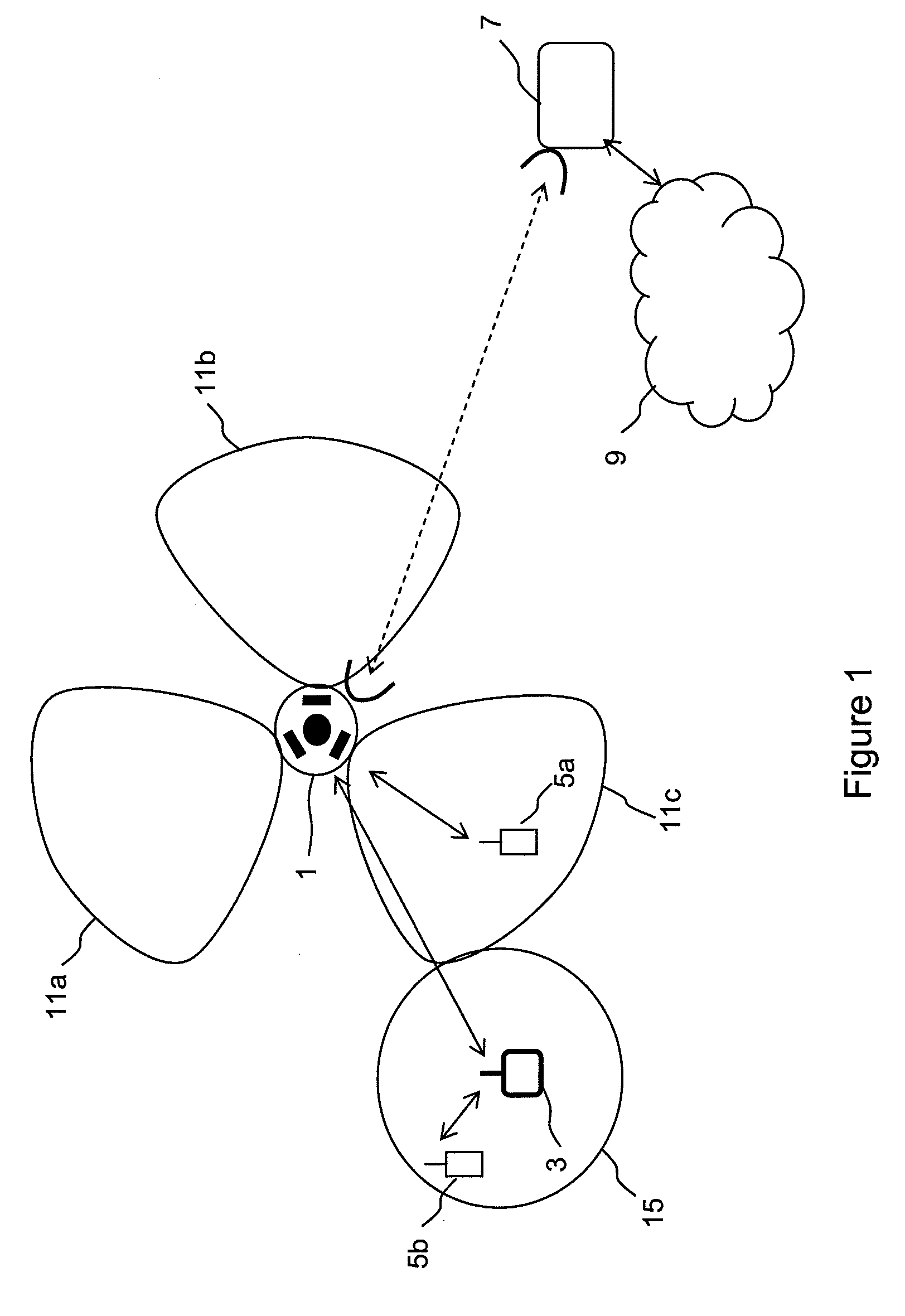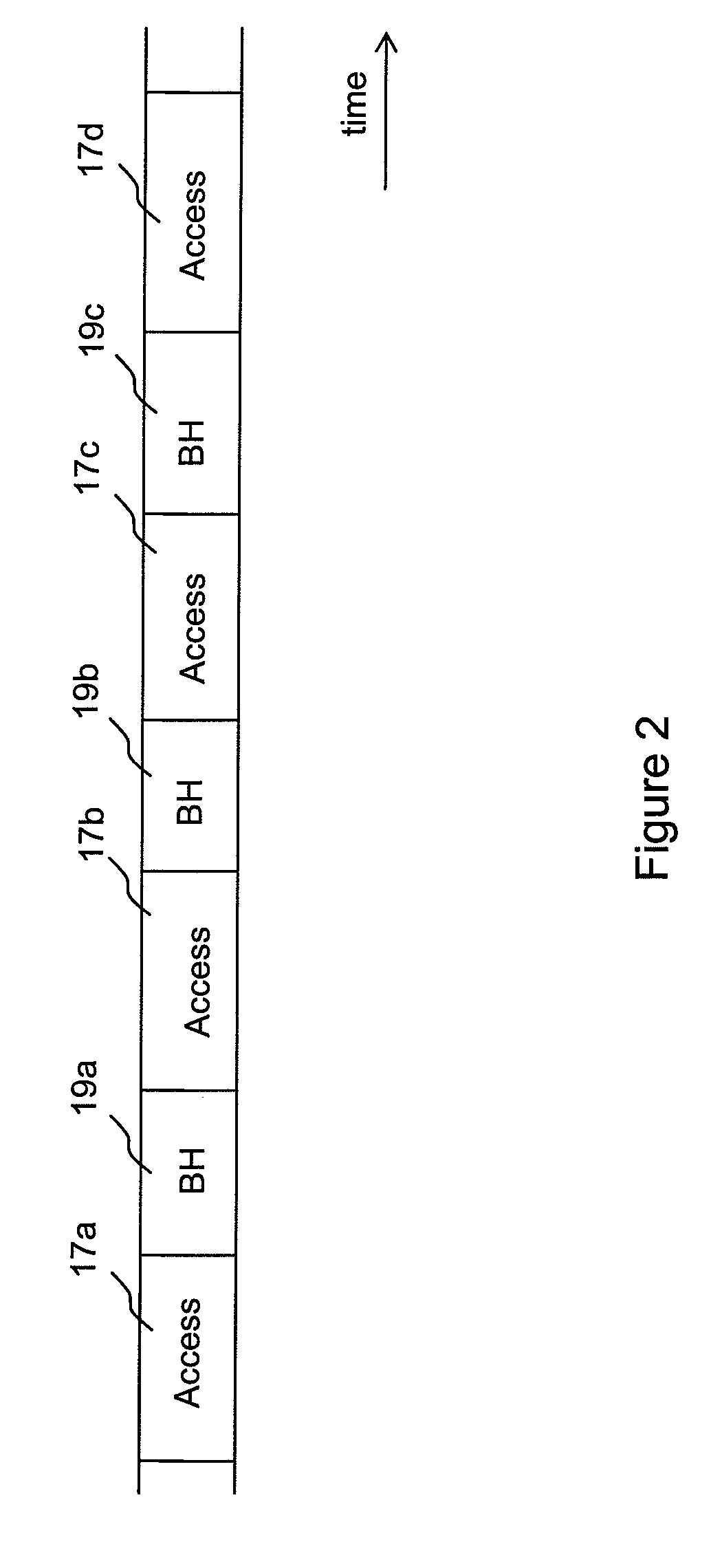Antenna System
a wireless communication network and antenna technology, applied in the field of antenna systems for wireless communications networks, can solve the problems of increased operational expenses associated with adopting multiple leased lines, high cost of high-capacity systems, and associated costs of backhaul methods, so as to reduce the power of transmitted and received interference, increase the gain of beams, and reduce the effect of transmission and receiving interference signal power
- Summary
- Abstract
- Description
- Claims
- Application Information
AI Technical Summary
Benefits of technology
Problems solved by technology
Method used
Image
Examples
Embodiment Construction
[0033]In general, the present invention is directed to methods and apparatus that provide backhaul by using the cellular wireless resource within a cellular wireless system. For clarity, the methods and apparatus are described in the context of a high speed packet data system such as IEEE802.16 (WiMax) or LTE, but it will be appreciated that this is by way of example and that the methods and apparatus described are not limited to this example.
[0034]FIG. 3 shows a first embodiment of the invention. As in the case of conventional arrangements, a user equipment 5b is in communication with a relay node base station 3, the relay node producing an omnidirectional radiation pattern 15. Backhaul from the relay node 3 is provided by a link 18 to a base station 1 which itself has a microwave link to a microwave station 7 and thence to a telecommunications network 9. In the system illustrated in FIG. 1, the backhaul link 18 from the relay node 3 to the base station 1 is via lobe 11a of the rad...
PUM
 Login to View More
Login to View More Abstract
Description
Claims
Application Information
 Login to View More
Login to View More - R&D
- Intellectual Property
- Life Sciences
- Materials
- Tech Scout
- Unparalleled Data Quality
- Higher Quality Content
- 60% Fewer Hallucinations
Browse by: Latest US Patents, China's latest patents, Technical Efficacy Thesaurus, Application Domain, Technology Topic, Popular Technical Reports.
© 2025 PatSnap. All rights reserved.Legal|Privacy policy|Modern Slavery Act Transparency Statement|Sitemap|About US| Contact US: help@patsnap.com



